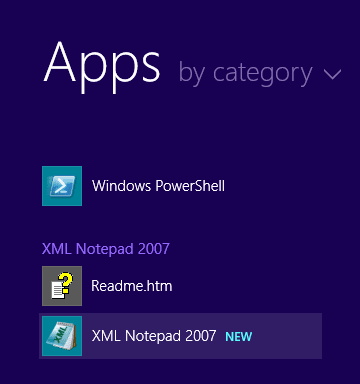

For the purposes of this experiment, we will assume we want to present them with a default set of settings, such as: This probably isn’t anywhere near what you’d want your users to be presented with in a corporate environment. You can turn it off with Windows 8.1 so that they don’t see it when they boot in to the desktop, but when they hit the Start “button” or press the Windows key (or even Ctrl-Esc for those of you who remember the days before the Windows key), the Start Screen will be there in all of its supposed glory. Windows 8.x introduced a few major, in-your-face changes to users, so if you’re upgrading them to this platform, the first and most noticeable change for them will be the appearance of the Start Screen to greet them.


Whilst the method discussed here remains viable, the method in this post is far more robust and would be the recommended way of achieving this end.
#XML NOTEPAD WINDOWS 8.1 UPDATE#
Update – thanks to Tom Scase and Simon Bond, I’ve written up a much easier way to get this working. Naturally, we’re going to be leveraging AppSense DesktopNow Environment Manager to help us out with the customization and personalization of the Start Screen and UI, but for those of you who aren’t AppSense customers, then the basic principles should remain the same. As I promised a while ago, let’s today try to do a bit more on the Windows 8.1 side of things, as I have been spending more time than I’ve wanted to digging around inside, as C3PO might have said, its busty innards.


 0 kommentar(er)
0 kommentar(er)
